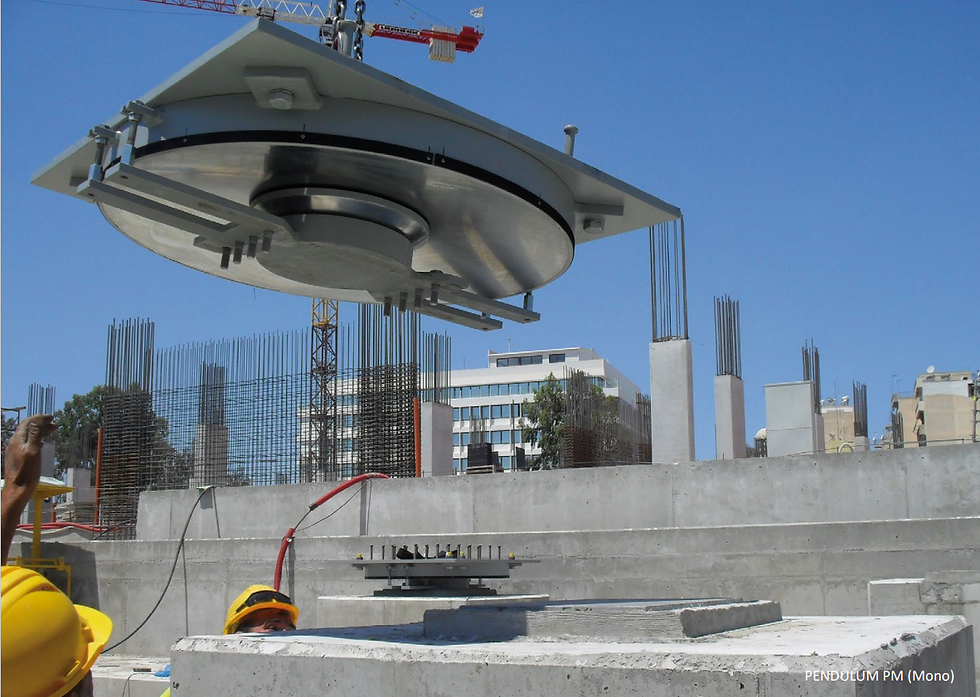Seismic Isolation in Bridge Design #6: Comparison of Seismic Analysis Results
- Varun Garg

- Apr 9, 2024
- 3 min read
Updated: Apr 25, 2024
After exploring the fundamentals and applications of Friction Pendulum Bearings (FPB) in seismic isolation for bridges, it becomes essential to juxtapose these modern techniques against conventional bearing systems. This comparative analysis illuminates the effectiveness, advantages, and potential limitations of using FPB in bridge design, especially in seismically active regions. We'll dissect the seismic analysis results, focusing on shear forces, bending moments, displacement demands, and the overall seismic resilience offered by FPB technology compared to traditional methods.
For a background on this study review Post #1 here.
Comparative Analysis Framework
The comparison between conventional bearing systems and FPB utilizes several key metrics:
Shear Forces and Bending Moments: These are fundamental structural responses that significantly affect the design and safety of bridge piers and foundations. By comparing these forces, we gain insights into the structural demands placed on the bridge under seismic loading.
Displacement Demands: Seismic isolation aims to manage displacement rather than eliminate it. Understanding how FPB affects displacement demands is crucial for evaluating its performance.
Restoring Capability: The ability of the isolation system to return to its original position post-earthquake is a critical measure of resilience.
Results Overview
Reduced Seismic Forces: Analysis reveals that FPB significantly reduces seismic forces transmitted to the bridge. This reduction is evident in both shear forces and bending moments, indicating a lower demand on the structural components and potentially leading to cost savings in construction and materials.
Increased Displacement: While FPB reduces force demands, it allows for greater displacement. This trade-off is a fundamental aspect of seismic isolation, requiring careful consideration in the design of the superstructure and substructure to accommodate these movements without compromising structural integrity.
Self-Restoring Capability: The FPB system's inherent design ensures that the bridge returns to its original position after an earthquake, enhancing the structure's resilience and reducing the need for post-event repairs.
Shear Force and Bending Moment Comparison
The seismic analysis using MIDAS Civil software provides detailed insights into the behavior of the bridge under seismic loads. For conventional bearings:
Shear Forces: The forces are significantly higher compared to the FPB system, indicating a greater demand on the pier and foundation design to withstand these forces.
Bending Moments: Similarly, bending moments are substantially increased in conventional systems, necessitating robust reinforcement to prevent failure
Conversely, with FPB:
Shear Forces and Bending Moments: Both are markedly reduced, highlighting the efficacy of FPB in mitigating seismic demands. This reduction can lead to more slender and cost-effective pier designs.
Displacement Demand and Restoring Capability
FPB Systems: The analysis indicates increased displacement demands, necessitating design strategies to accommodate these movements. However, the FPB's self-restoring capability ensures the bridge's alignment and functionality post-seismic events, emphasizing the system's resilience.
Friction Pendulum Bearings serve the following main functions:
Transmit vertical forces and allow horizontal movements under service conditions
Provide lateral flexibility during earthquakes via sliding along the curved surface
Dissipate energy through dynamic friction between the sliding surfaces
Offer re-centering functionality through design geometry and gravity Courtesy: mageba
Practical Implications
Design Considerations: The significant reduction in seismic forces with FPB allows for a more economical design of piers and foundations. However, the increased displacement demands careful integration of expansion joints and flexible connections to accommodate movements.
Construction and Maintenance: Reduced force demands may lower construction costs and complexity. Additionally, the self-restoring feature of FPB minimizes maintenance and repair needs after an earthquake, further enhancing the economic benefits of this approach.
Conclusion
The detailed comparison of seismic analysis results between conventional bearing systems and FPB underscores the transformative potential of seismic isolation in bridge design. By significantly reducing seismic forces while managing increased displacements, FPB systems offer a compelling solution for enhancing the seismic resilience of bridges. This analysis not only demonstrates the technical advantages of FPB but also highlights the broader implications for design, construction, and maintenance practices in seismic bridge engineering. As we move forward, the focus will shift to the overall comparison summary, providing a holistic view of the impact of seismic isolation on bridge foundation design.







Comments